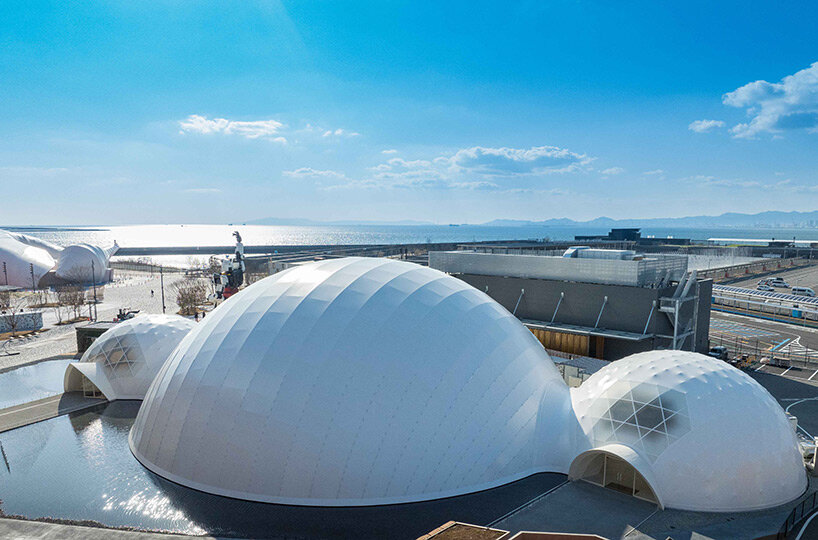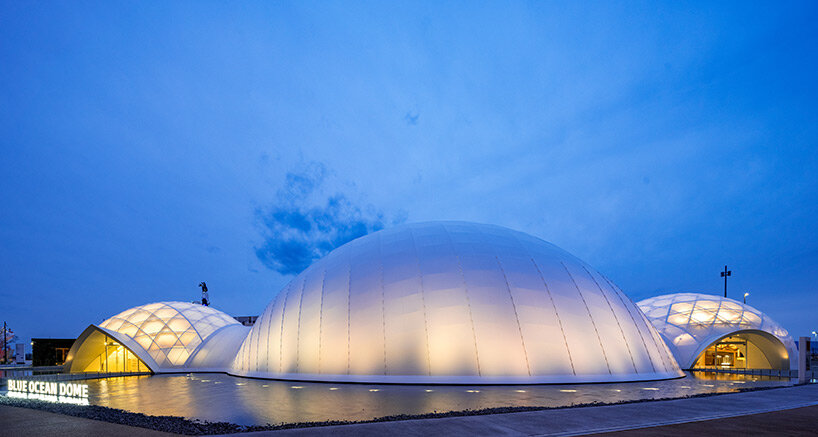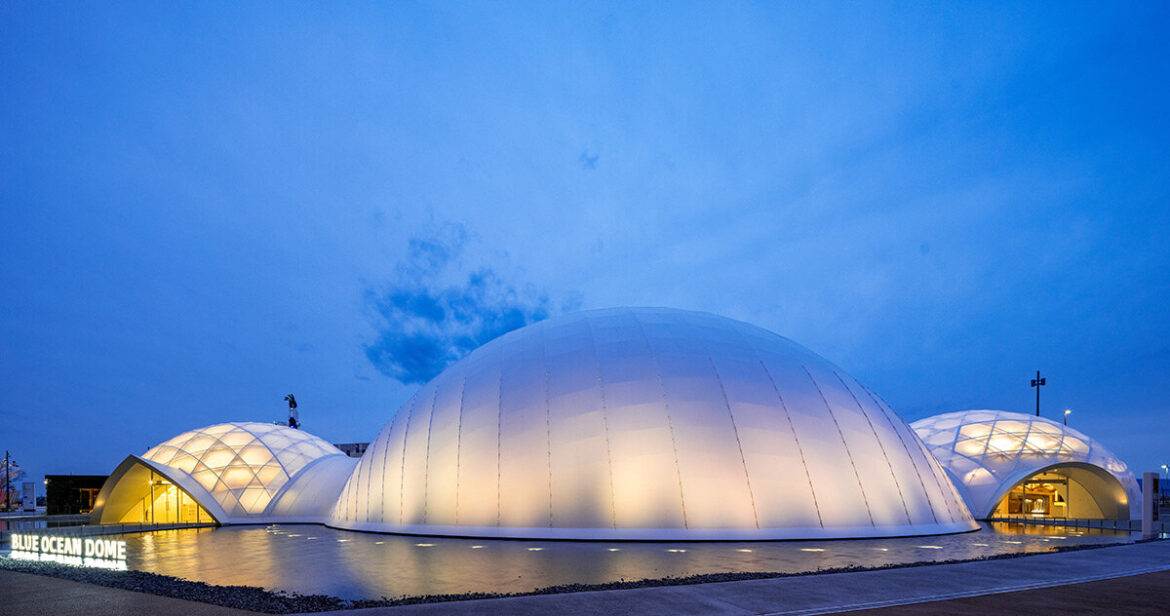the Architecture of Urgency at expo 2025 osaka
At Expo 2025 Osaka, where nations converge to envision the future, Pritzker Prize-winning architect Shigeru Ban brings a statement of environmental awareness with the Blue Ocean Dome. This centerpiece of the Osaka-Kansai Pavilion, is not just a single timber structure, but a trio of interconnected domes, each one a structural essay in sustainable materiality. With this project, the architect — known for his humanitarian architecture and pioneering work with non-traditional materials — reminds visitors that design, like the ocean it honors, can be both fluid and forceful.
Shigeru Ban’s pavilion takes on urgent themes: plastic marine pollution, the future of marine industries, and oceanic climate awareness. These are at once passive exhibits and active calls to action. Each dome within the Blue Ocean Dome complex becomes a spatial metaphor, constructed with materials that speak directly to environmental issues, situated prominently on Yumeshima Island like a triumvirate of hope.

the Blue Ocean Dome is the centerpiece of the expo’s Osaka Kansai Pavilion | image © Hiroyuki Hirai
domes of laminated bamboo and carbon fiber
Shigeru Ban’s vision for Expo 2025 Osaka begins with Dome A, constructed entirely of laminated bamboo. More than a nod to nature, bamboo is a material with serious architectural merit. It grows rapidly, absorbs carbon, and can be shaped into high-strength, lightweight structures. Inside this warm, organic shell, the dome houses a media zone, introducing Expo-goers to the ocean-themed programming that lies ahead. As the architect sees it, sustainable design starts with choosing the right materials — ones that grow as quickly as the ideas they shelter.
The concept escalates in Dome B, a marvel of carbon fiber reinforced plastic (CFRP). This is Shigeru Ban’s most experimental move, marking the world’s first-ever architectural dome made entirely from CFRP. Stronger than steel and lighter than aluminum, CFRP allows a span of over 40 meters with a featherweight touch. The structure’s web-like pattern evokes both marine biology and aerospace engineering, pointing to a future where ecological responsibility and high-tech performance coexist.

three distinct domes are made from bamboo carbon fiber and paper tubes | image © Hiroyuki Hirai
Shigeru Ban’s Paper Tube finale
The finale of the Expo 2025 Pavilion comes in Dome C, built from paper tubes, Shigeru Ban’s signature material. Though unassuming, these tubes form a structurally sound and easily recyclable envelope, engineered in collaboration with Rengo Co., Ltd. Inside, this space functions as a live broadcast zone — another kind of vessel, transmitting ideas across distances. Ban’s long history with paper tubes, from emergency shelters to cathedral vaults, finds new relevance here: temporary yet resilient, light yet deeply impactful.
The domes represent a design ecosystem. Developed in coordination with ZERI Japan and Blue Ocean Forum, each dome becomes a hub for dialogue, innovation, and cross-disciplinary exchange. By connecting designers, scientists, and entrepreneurs, the Blue Ocean Dome serves as a stage as well as a catalyst for ideas that ripple far beyond the pavilion walls.
The work recalls his previous works for world expos and disaster zones — spaces that must adapt to uncertainty while delivering clarity of purpose. Whether through the bamboo lattice of Dome A, the ultralight CFRP shell of Dome B, or the tactile honesty of Dome C’s paper tubes, Shigeru Ban’s pavilion is never neutral. It carries intention, and in this case, a rallying cry to protect the oceans.

the domes address marine protection, sustainability, and climate education | image © Hiroyuki Hirai

the paper tube dome demonstrates Ban’s signature approach to recyclable architecture | image © Hiroyuki Hirai

the bamboo dome uses a fast growing, renewable material | image © Hiroyuki Hirai


AloJapan.com